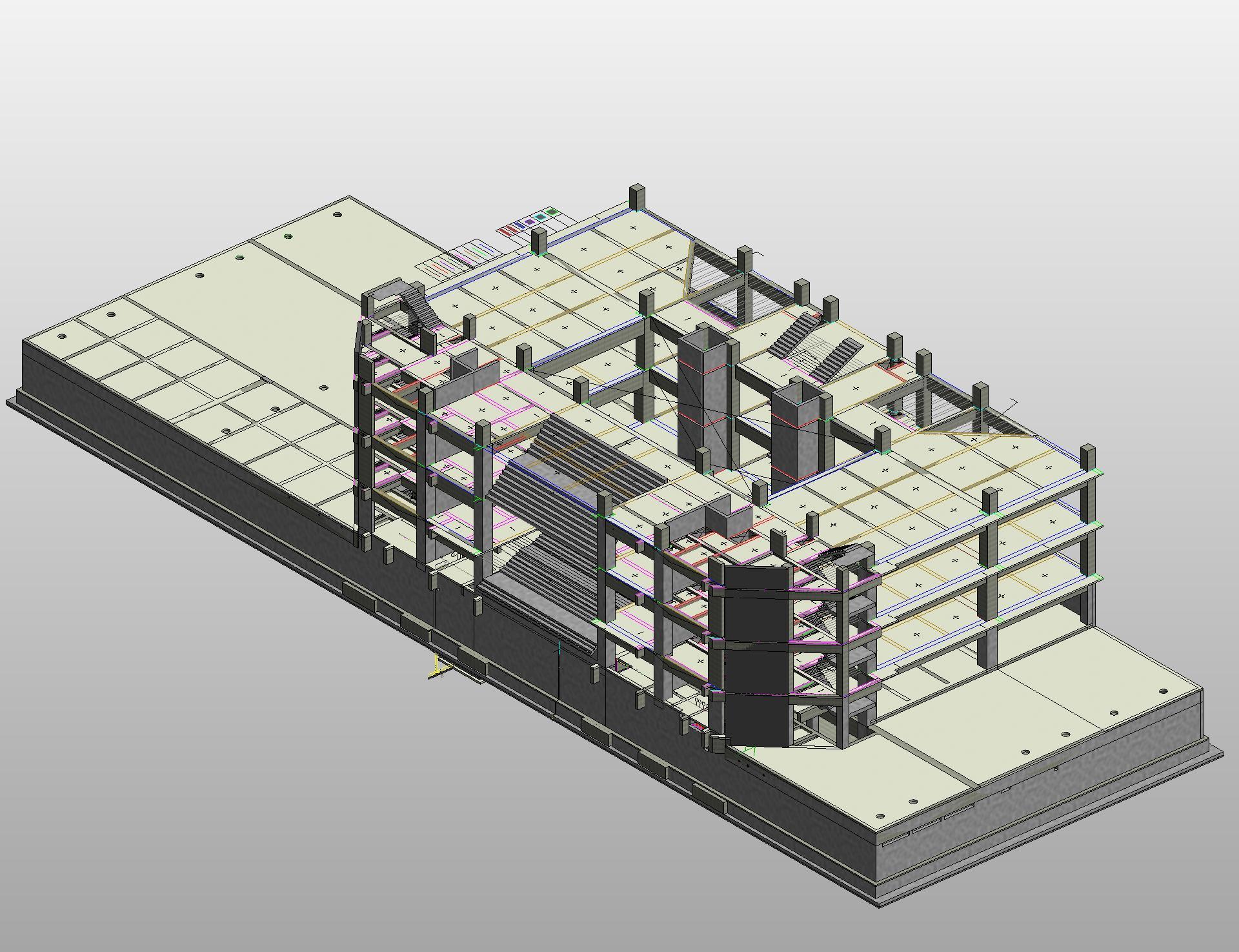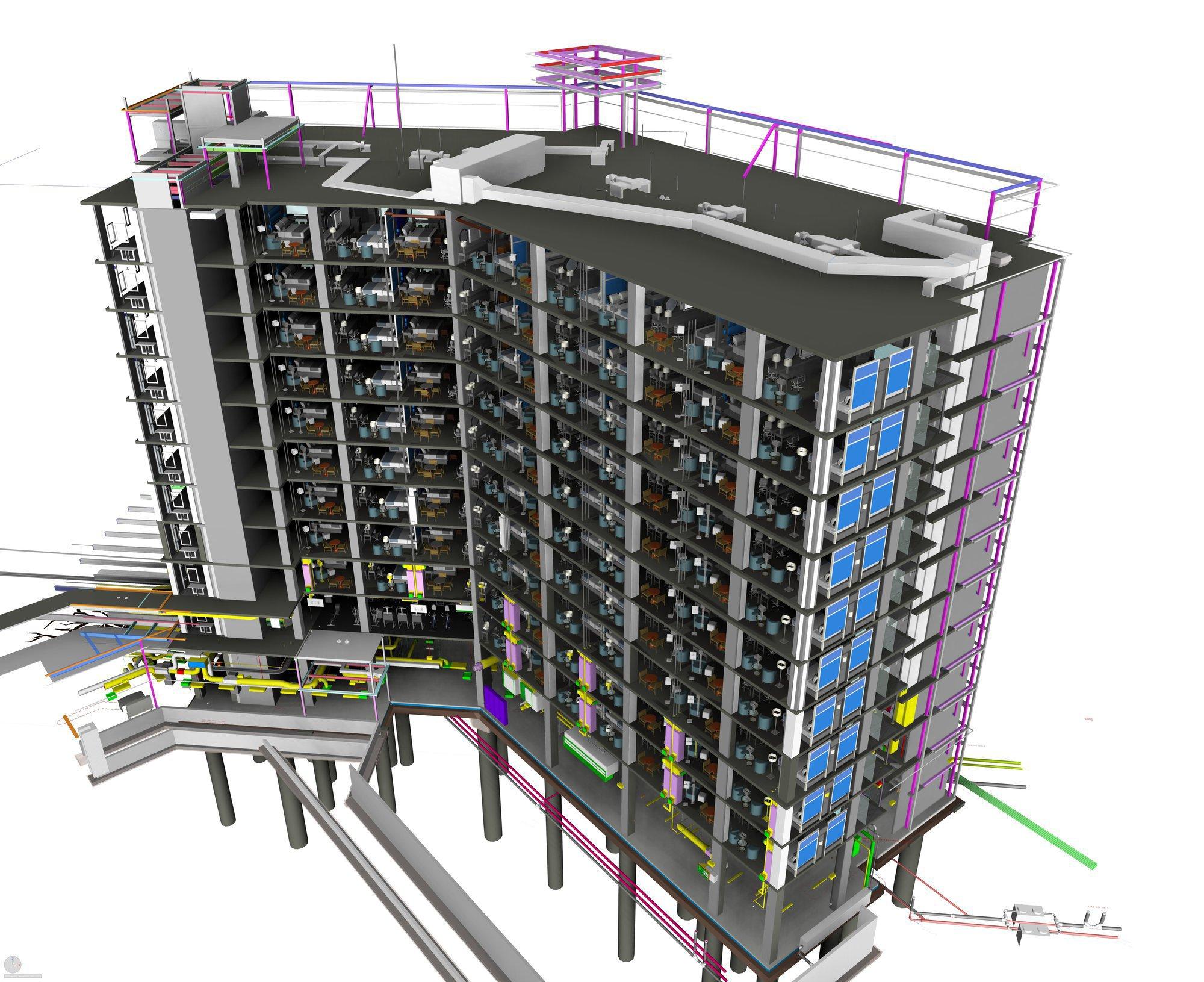Revit Structural
Revit Structural Modeling Drawings
Revit structure is intended for structural engineers and engineering companies. It helps them create detailed structural designs, workflows, schedules, documentation, and structural analysis.
It helps you “own” your design. It does this in two ways:
- Provide designers with information about their design
- Provide designers with a visualization (a model) for their design
We work on all minor to major Revit BIM Modeling Project. Knowing the importance of the project we offer the best team to handle the whole project as per the client’s requirements and their priority. We mostly focus on Structural Revit Drafting. Structural Analysis, Cost Calculation, BBS (Bar Bending Schedule) Estimation Additional services also integrated with the Working Drawings and Shop Drawings.
Acura teams having the best knowledge in run the project through the Revit 3D model And Rendering, Animation project.


FAQ
1. What is Revit Structural?
Revit Structural is a specialized version of Autodesk Revit designed specifically for structural engineering and design. It allows engineers to create detailed 3D models of building structures, such as beams, columns, foundations, and steel or concrete frames. Revit Structural supports Building Information Modeling (BIM), enabling efficient design, coordination, and analysis of structural elements in a project.
2. Why is Revit Structural important for building design?
Revit Structural is critical for structural engineers due to several reasons:
- BIM Integration: Revit supports BIM, allowing structural engineers to create accurate, data-rich 3D models that help visualize how a building will behave.
- Coordination: Revit ensures seamless integration with architectural and MEP (Mechanical, Electrical, and Plumbing) models, helping to avoid clashes and ensuring smooth coordination between various systems in the building.
- Accuracy: Structural models created in Revit are precise and reflect real-world measurements, helping reduce errors in the construction phase.
- Efficiency: With features like automatic updates across views and parametric design, Revit improves productivity and reduces manual effort.
- Enhanced Communication: The ability to produce visual representations and detailed construction documentation helps communicate design intent clearly with other stakeholders, such as architects, contractors, and clients.
3. What services are included in Revit Structural services?
Revit Structural services typically include the following offerings:
- 3D Structural Modeling: Creating detailed 3D models of structural components, including foundations, beams, columns, walls, and slabs.
- Structural Detailing: Providing detailed drawings for construction, such as plans, elevations, and sections, as well as material schedules.
- Structural Analysis Integration: Integrating structural analysis tools with the Revit model, allowing engineers to assess the behavior of structures under different loads and conditions.
- Rebar Detailing: Detailing and modeling reinforcement for concrete elements such as beams, columns, slabs, and foundations.
- BIM Coordination: Coordinating with architectural and MEP models to ensure that structural elements are correctly aligned and clash-free.
- Shop Drawings: Creating shop drawings for precast elements, steel frames, and other components that are fabricated off-site.
- Material and Quantity Takeoff: Generating material quantities and schedules directly from the Revit model, helping with project cost estimation and resource management.
- Clash Detection and Resolution: Identifying and resolving any clashes or conflicts between structural elements and other systems, improving coordination.
- Construction Documentation: Automatically generating construction documents, including structural plans, sections, elevations, and schedules.
- Revit Family Creation for Structural Components: Creating custom Revit families for specific structural components, like specialized beams, columns, or connections.
4. What types of structural elements can be modeled in Revit Structural?
Revit Structural is capable of modeling a wide variety of structural components, including:
- Beams and Columns: Horizontal and vertical load-bearing elements made from materials like steel, concrete, or wood.
- Foundations: Slab foundations, spread footings, pile foundations, and mat foundations.
- Slabs and Floors: Concrete or composite slabs, including different types of floor systems such as flat slabs, ribbed slabs, and composite decks.
- Walls and Foundations: Load-bearing and non-load-bearing walls, shear walls, and structural foundations.
- Structural Steel and Connections: Steel framing, including columns, beams, braces, and the various connections between them.
- Precast and Cast-in-Place Concrete Elements: Modeling precast panels, beams, and other cast-in-place concrete elements used in building construction.
- Stairs and Ramps: Structural components for stairs, ramps, and their supports.
- Rebar: Detailed rebar modeling and reinforcement within concrete structures.
5. What are the benefits of using Revit Structural?
Revit Structural offers several advantages for structural engineers and project teams:
- Streamlined Collaboration: Revit integrates with other disciplines (architectural, MEP) and enables real-time collaboration between teams, reducing errors and improving project coordination.
- Real-Time Changes: Revit automatically updates all views and documentation when changes are made, ensuring that design modifications are reflected throughout the model without needing manual updates.
- Reduced Errors and Rework: The software’s parametric design environment helps reduce the risk of clashes and design errors, leading to fewer changes and rework during construction.
- Enhanced Visualization: 3D modeling and visualization tools allow engineers and clients to see the structure in detail before construction begins, helping to catch potential issues early.
- Faster Design and Drafting: Automation tools for generating plans, sections, and schedules significantly reduce the time spent on manual drafting and documentation.
- Accurate Material Estimation: The ability to extract quantities and material specifications from the model helps improve project estimates and control material costs.
- Improved Sustainability: Revit’s built-in tools for energy analysis and material usage help ensure that structural designs are environmentally sustainable and meet energy efficiency goals.
6. How much does Revit Structural service cost?
The cost of Revit Structural services varies depending on:
- Project Size: Larger, more complex projects will require more time and resources, increasing the overall cost.
- Scope of Services: Services like detailed 3D modeling, rebar detailing, and clash detection may cost more than simple drafting or documentation.
- Customization: Customized or specialized structural components, such as unique connections or non-standard elements, can add to the cost.
- Experience and Location: Service providers with more experience or located in areas with higher living costs may charge premium rates.
On average, Revit Structural services can range from $50 to $150 per hour, with larger, more complex projects potentially costing tens of thousands of dollars.
Get In Touch
Contact us today to discuss your project needs and discover how we can support your goals.
